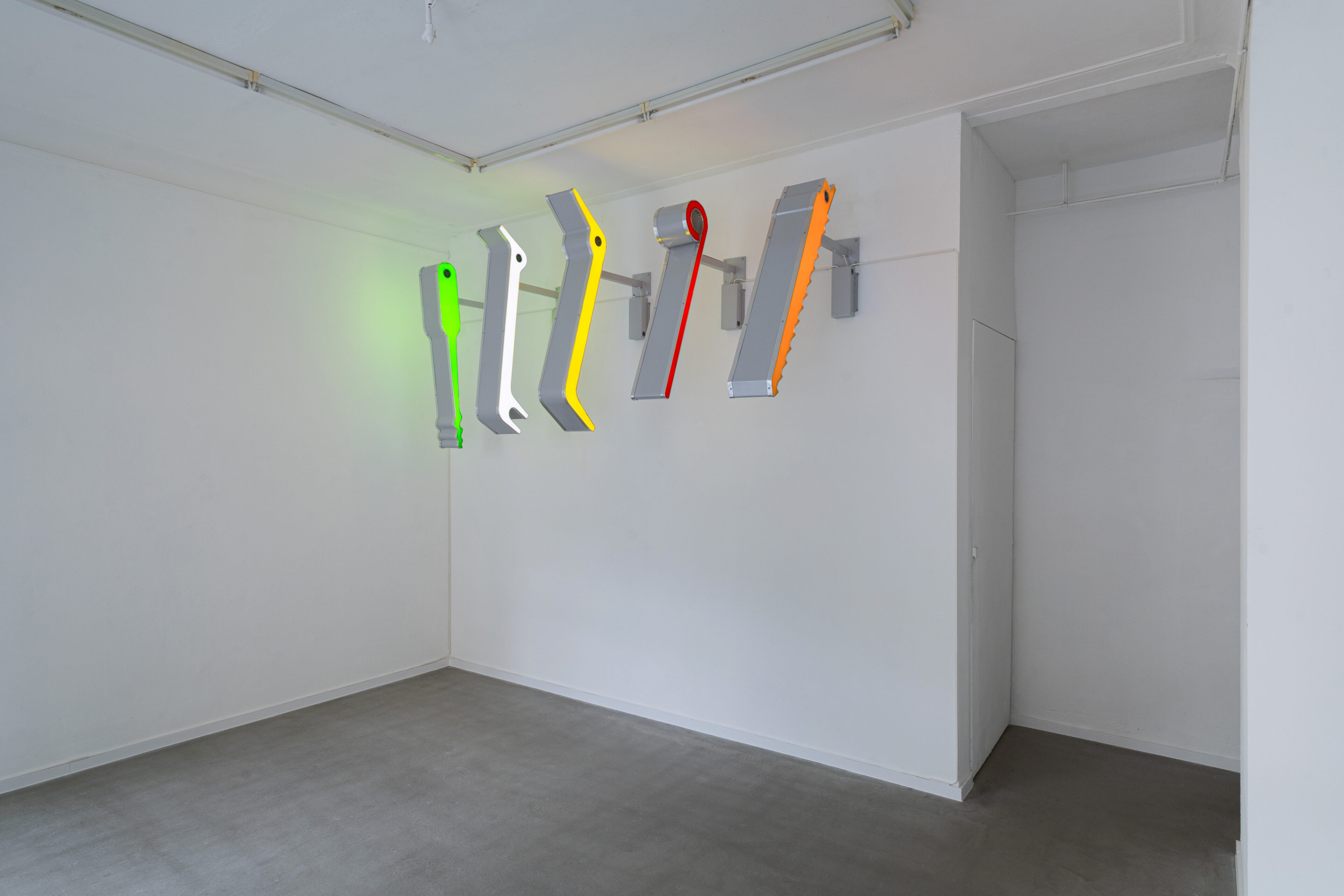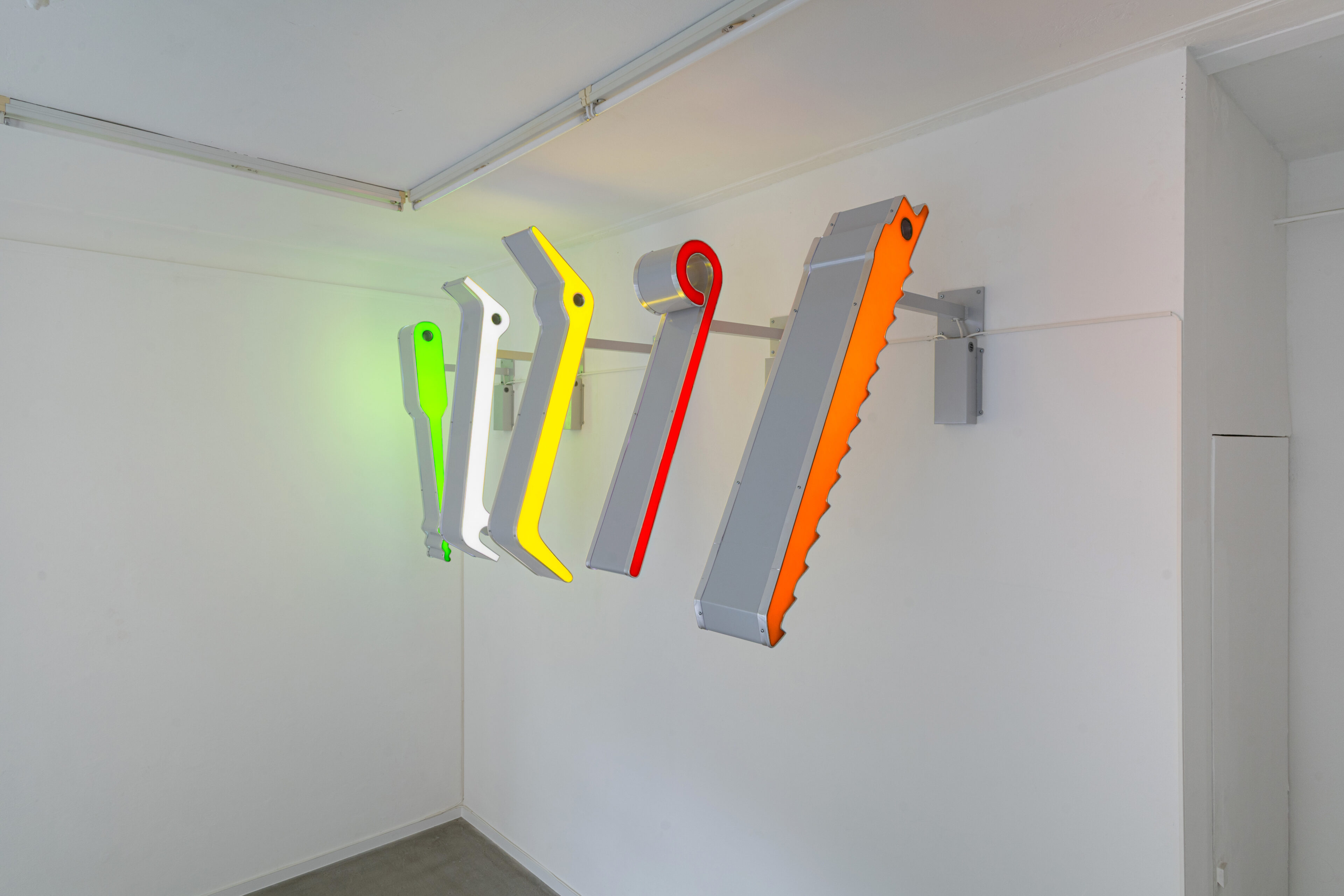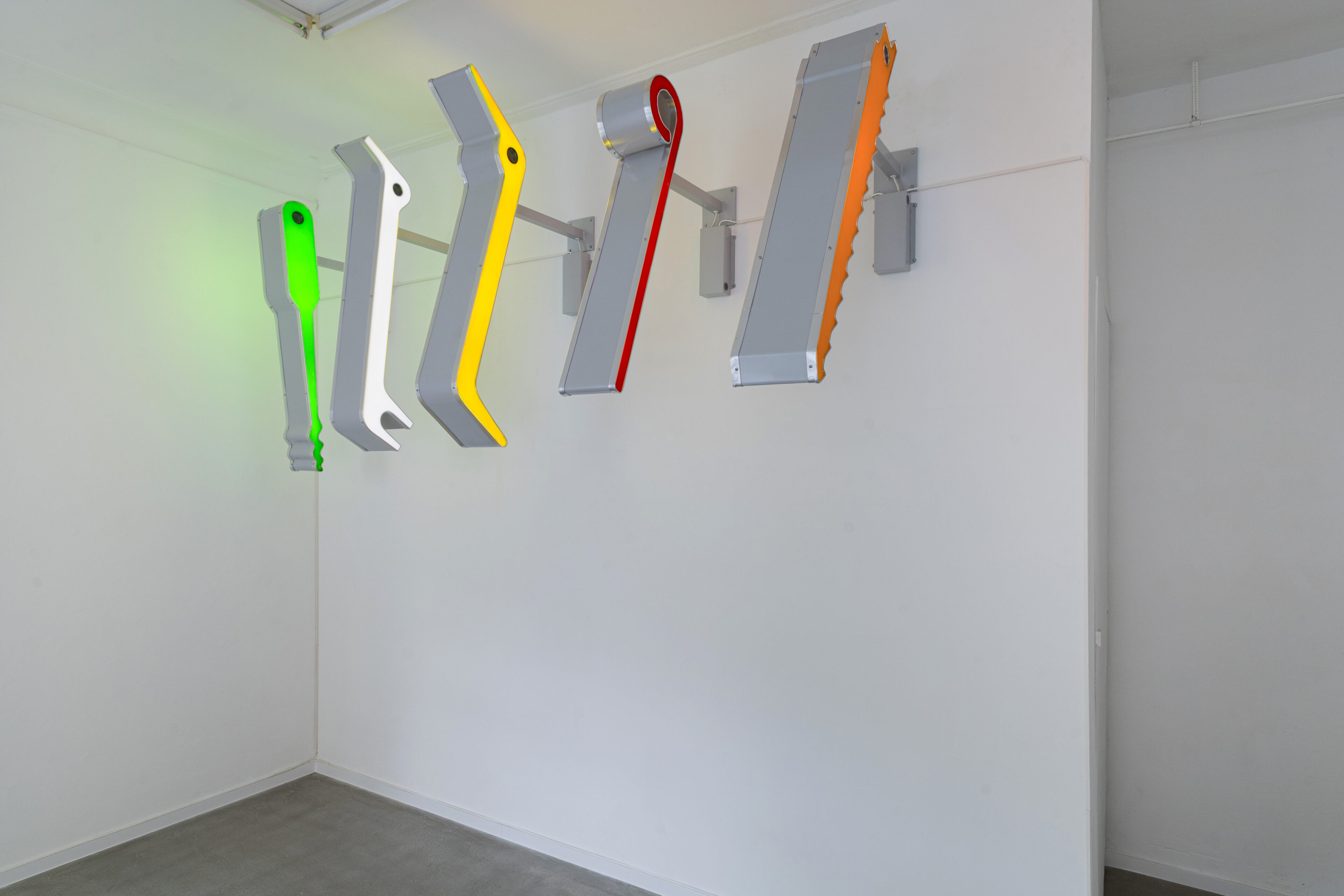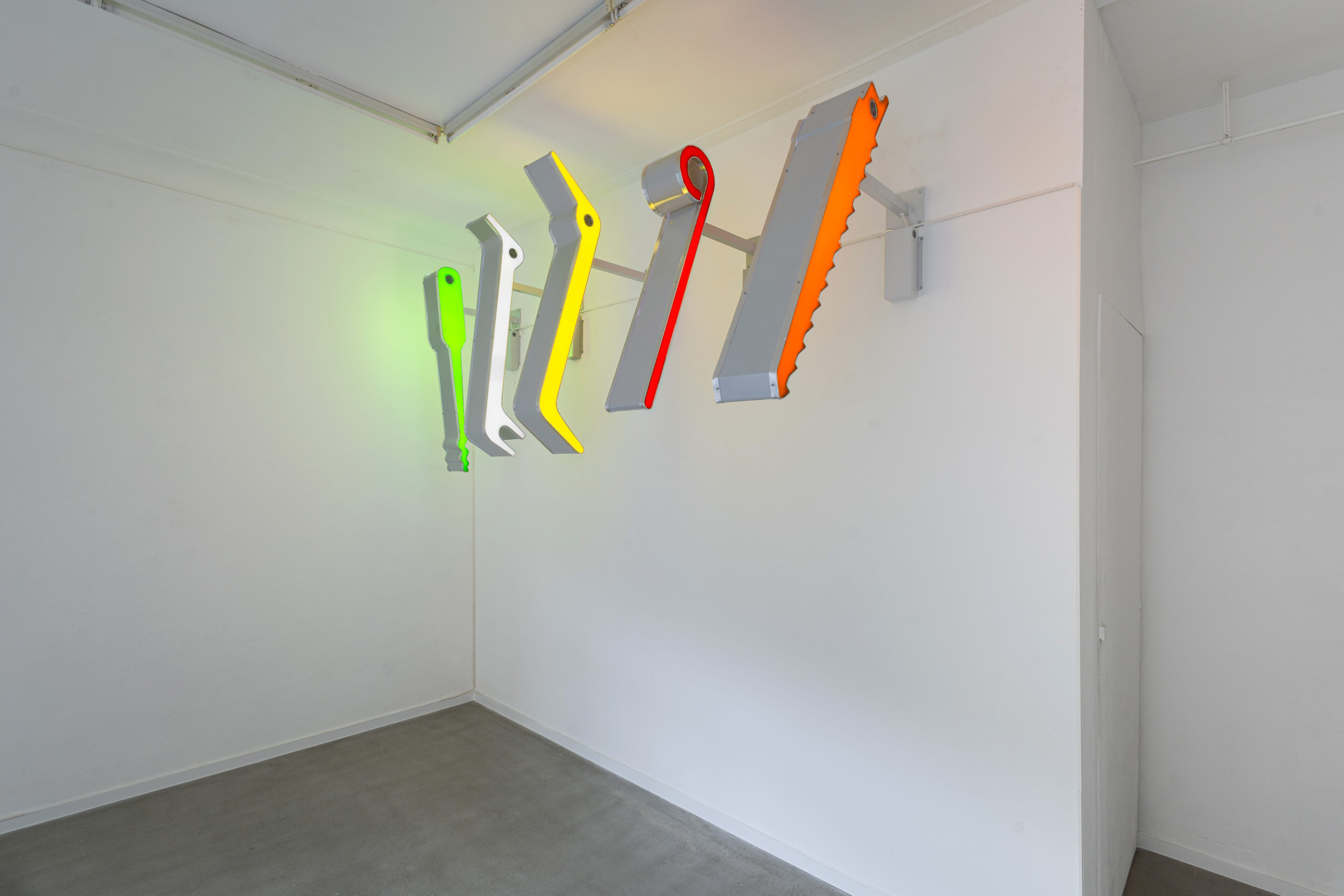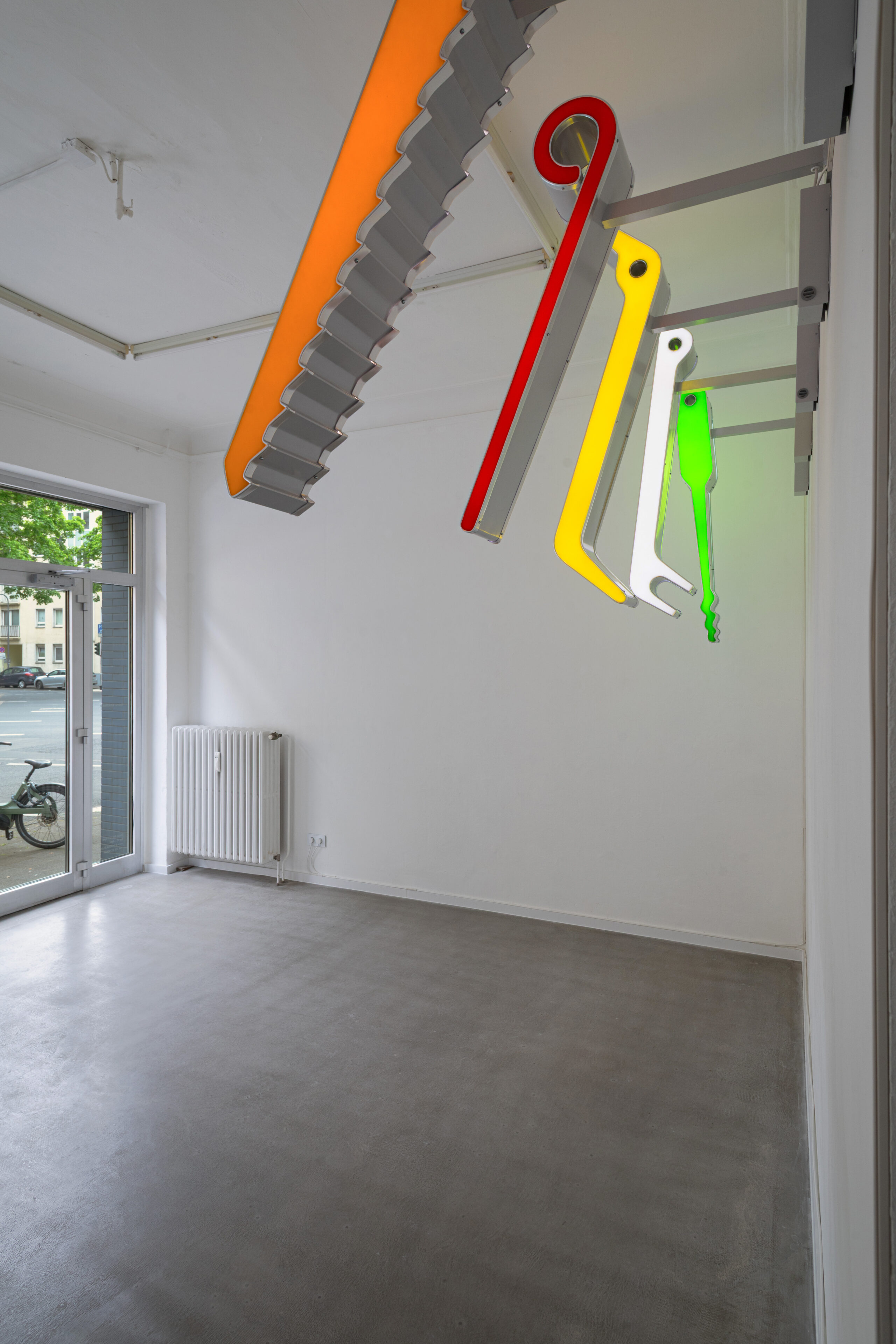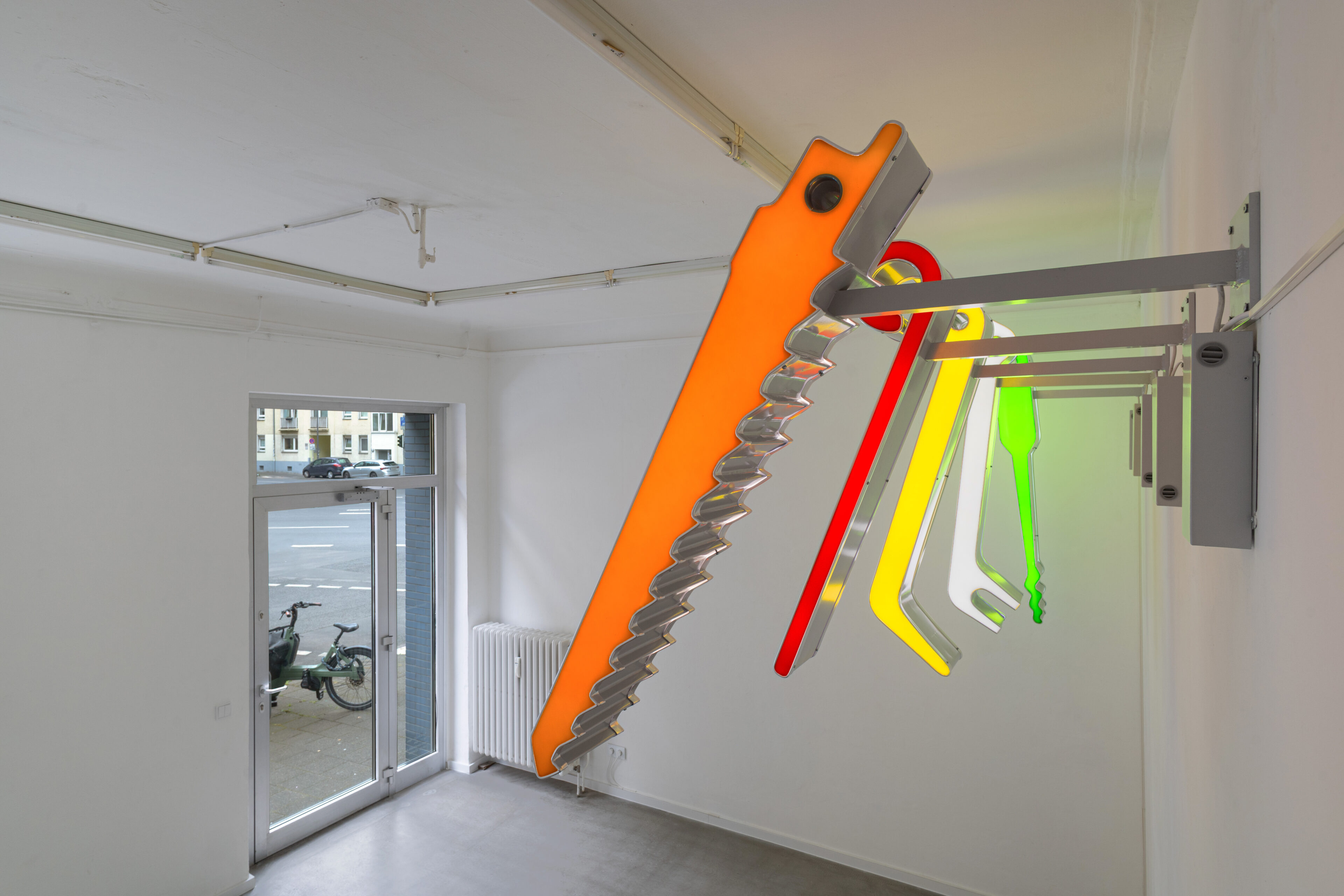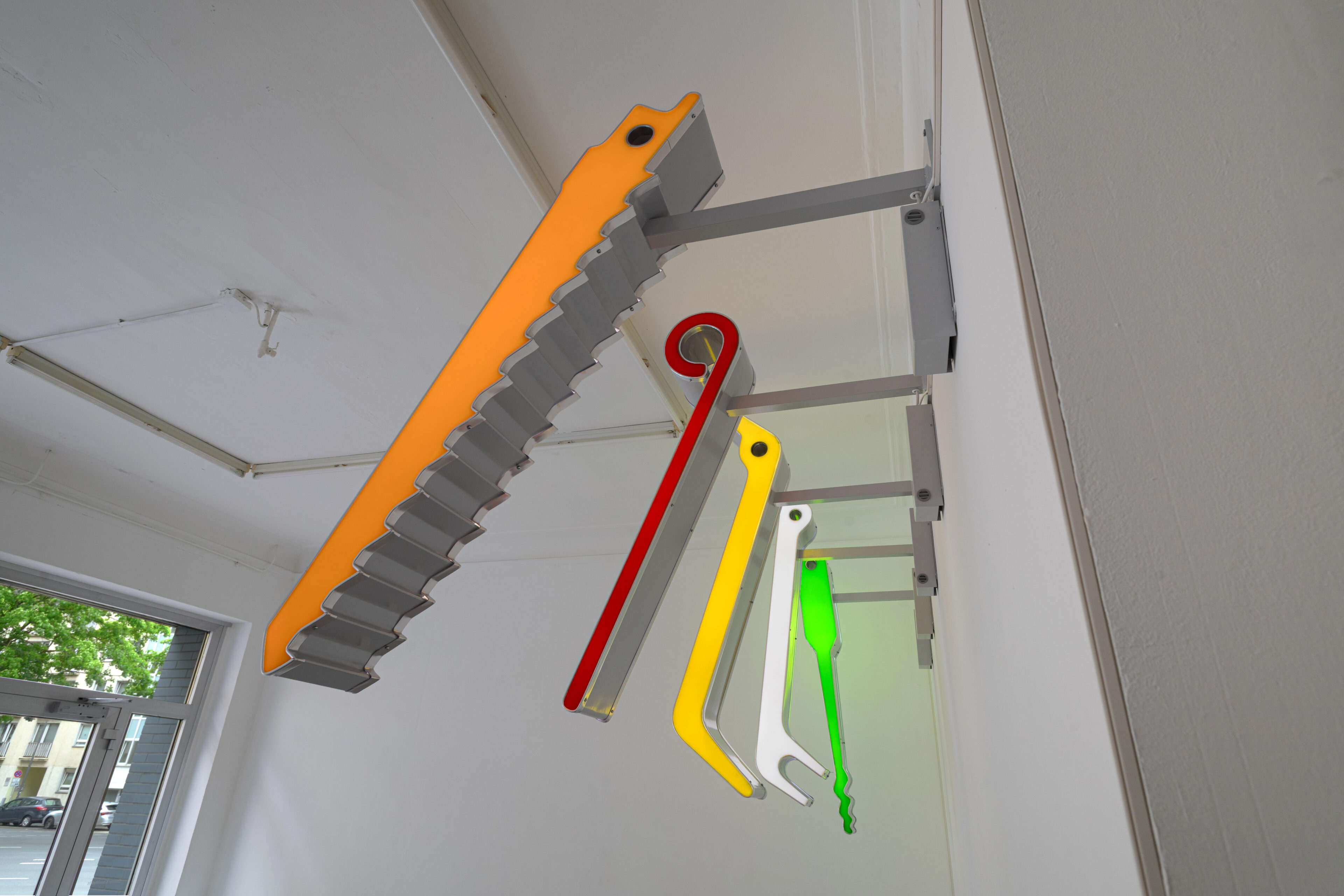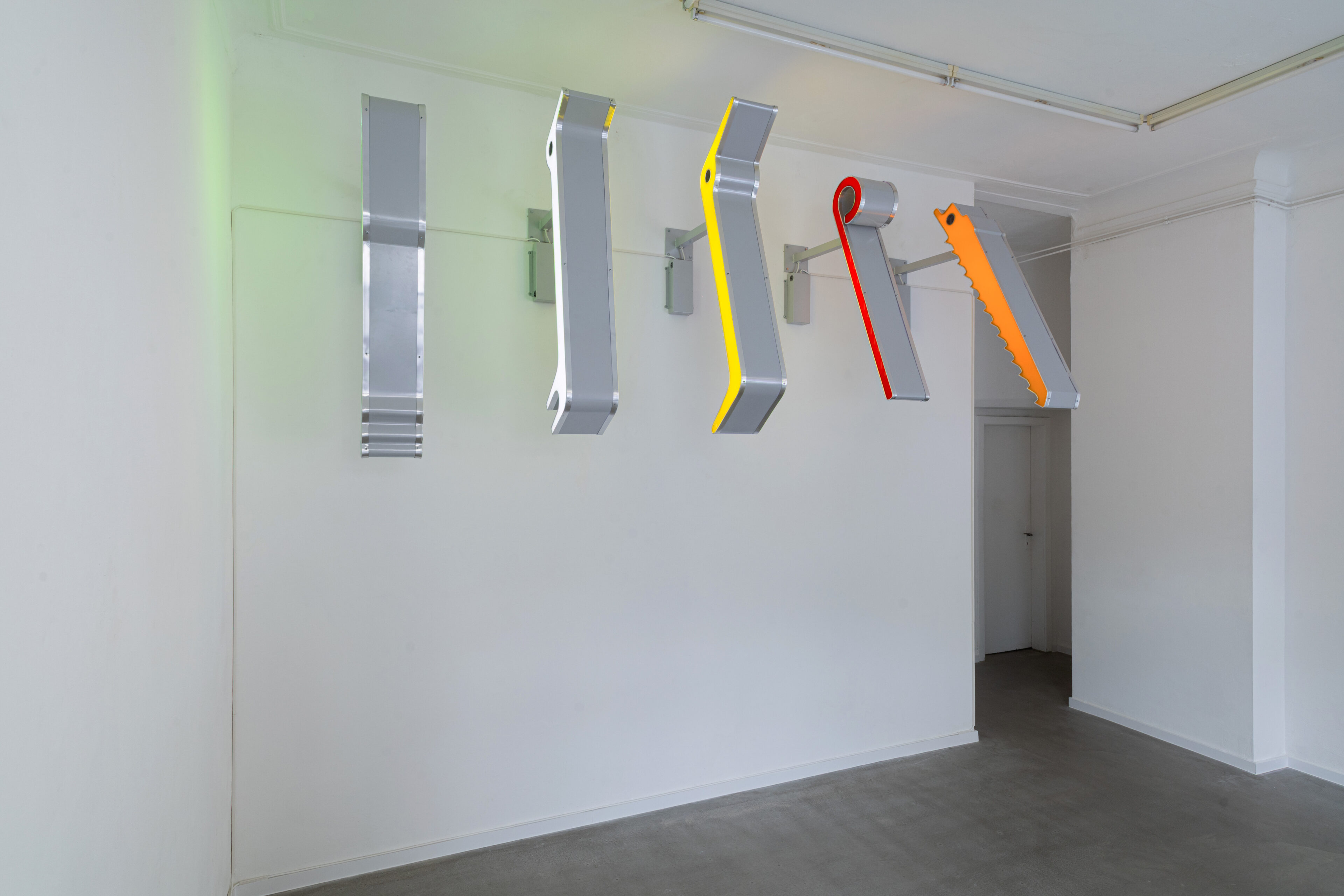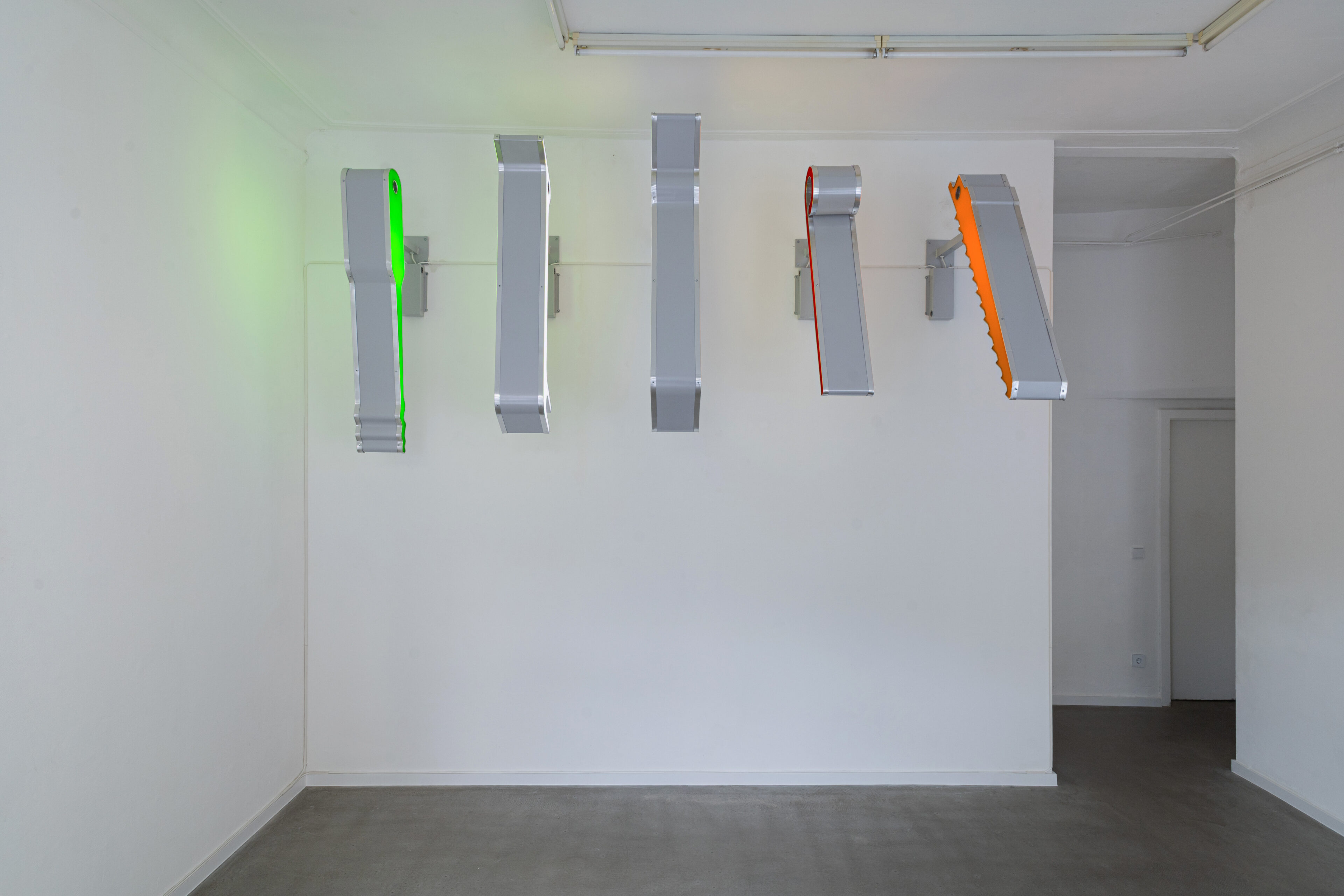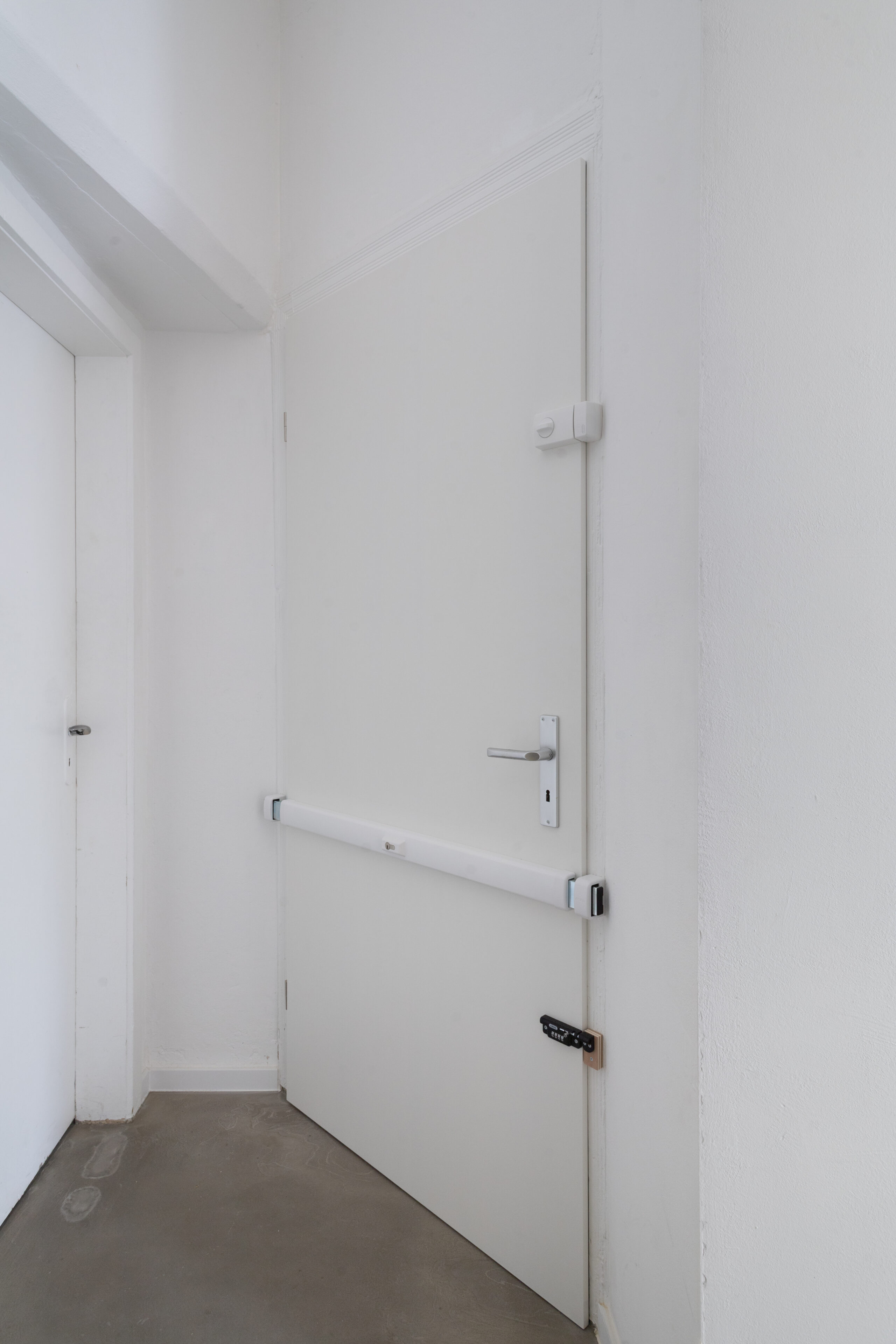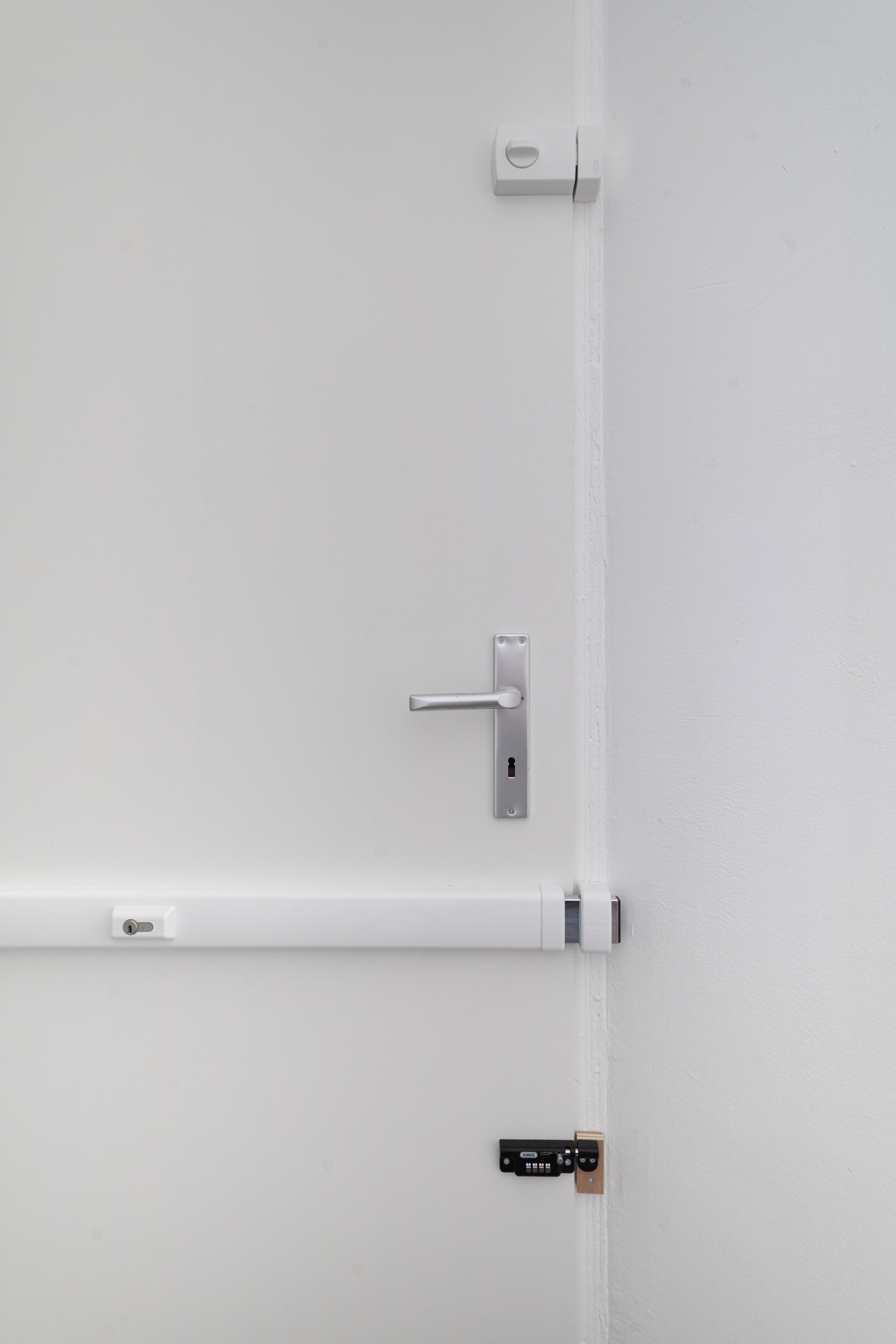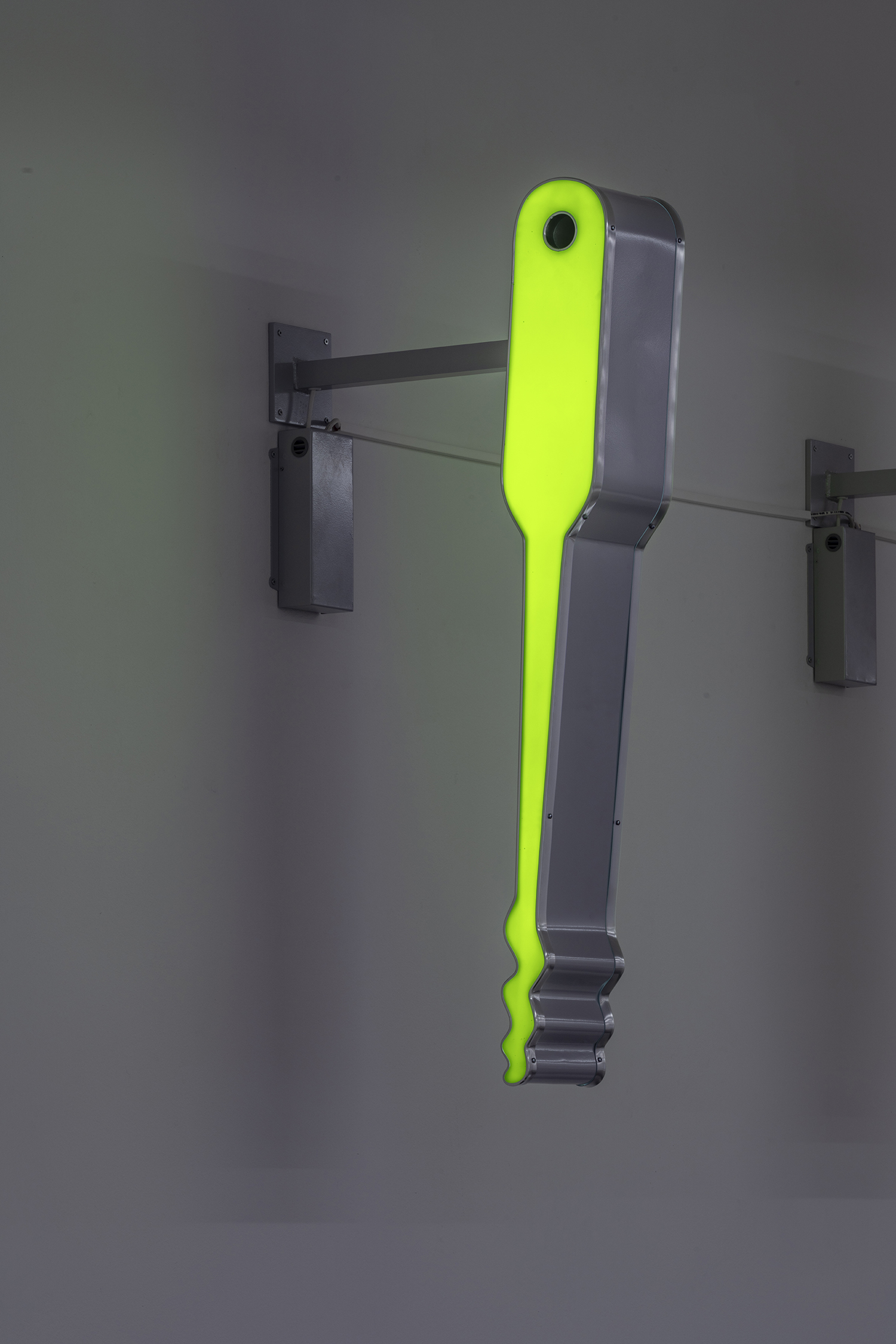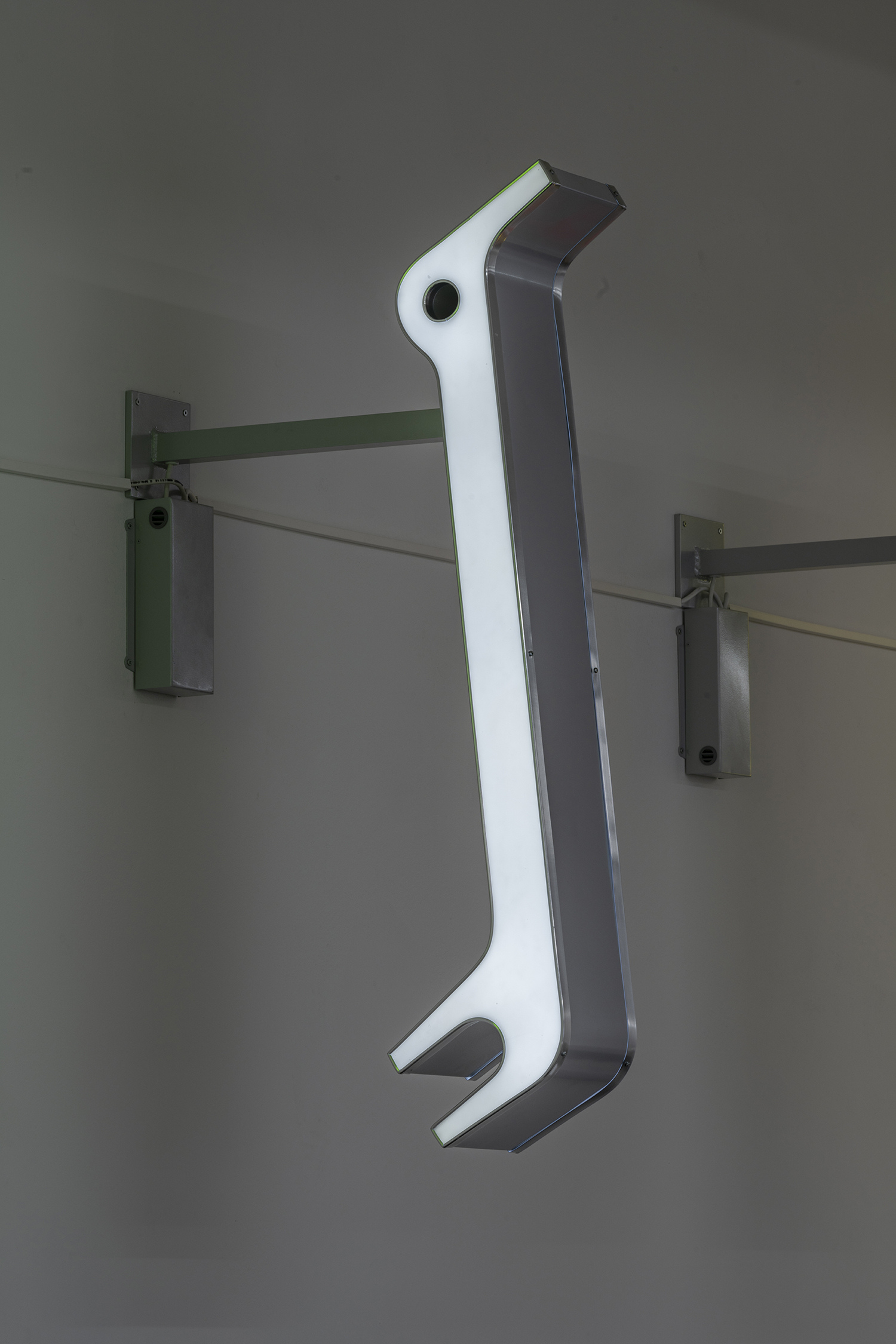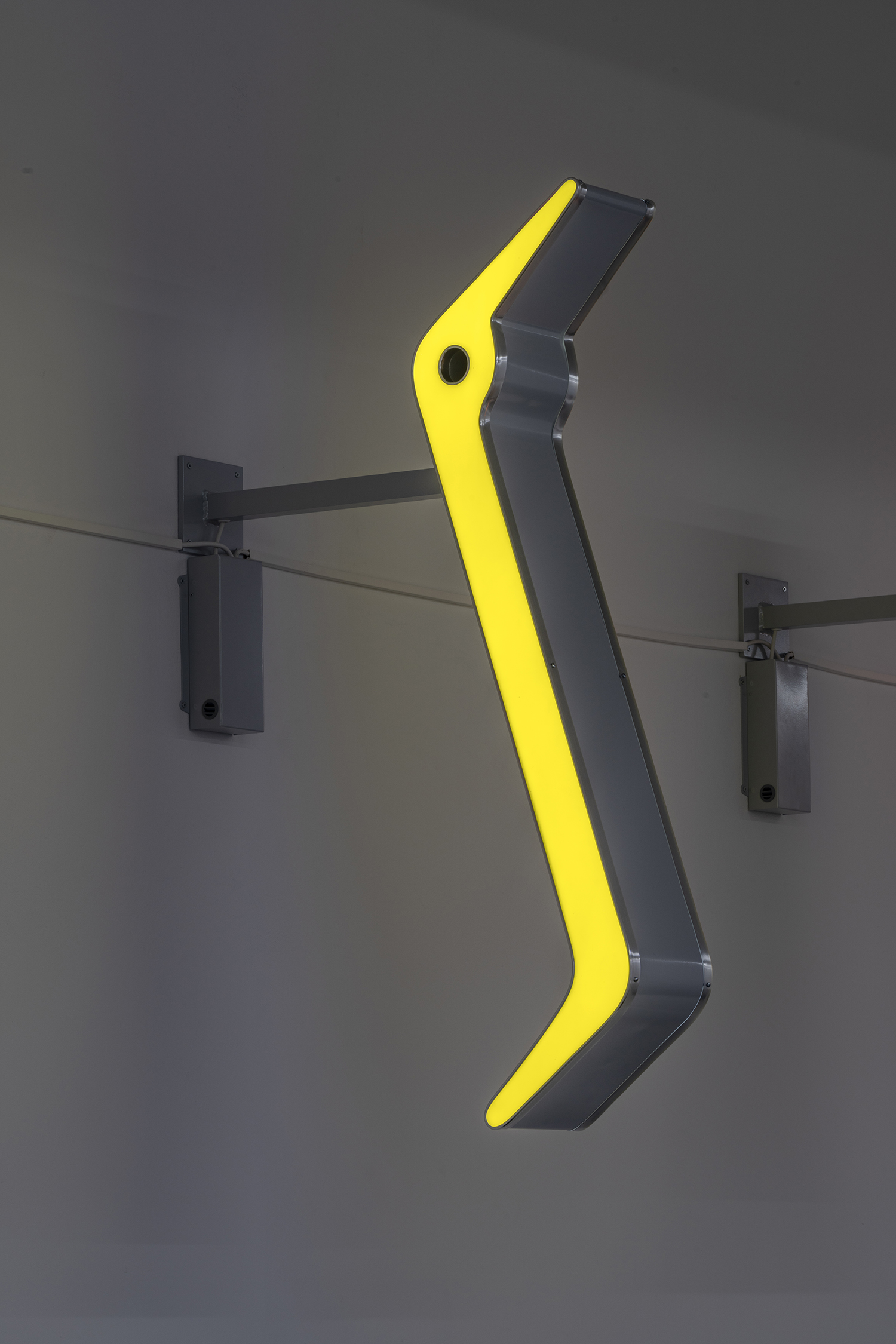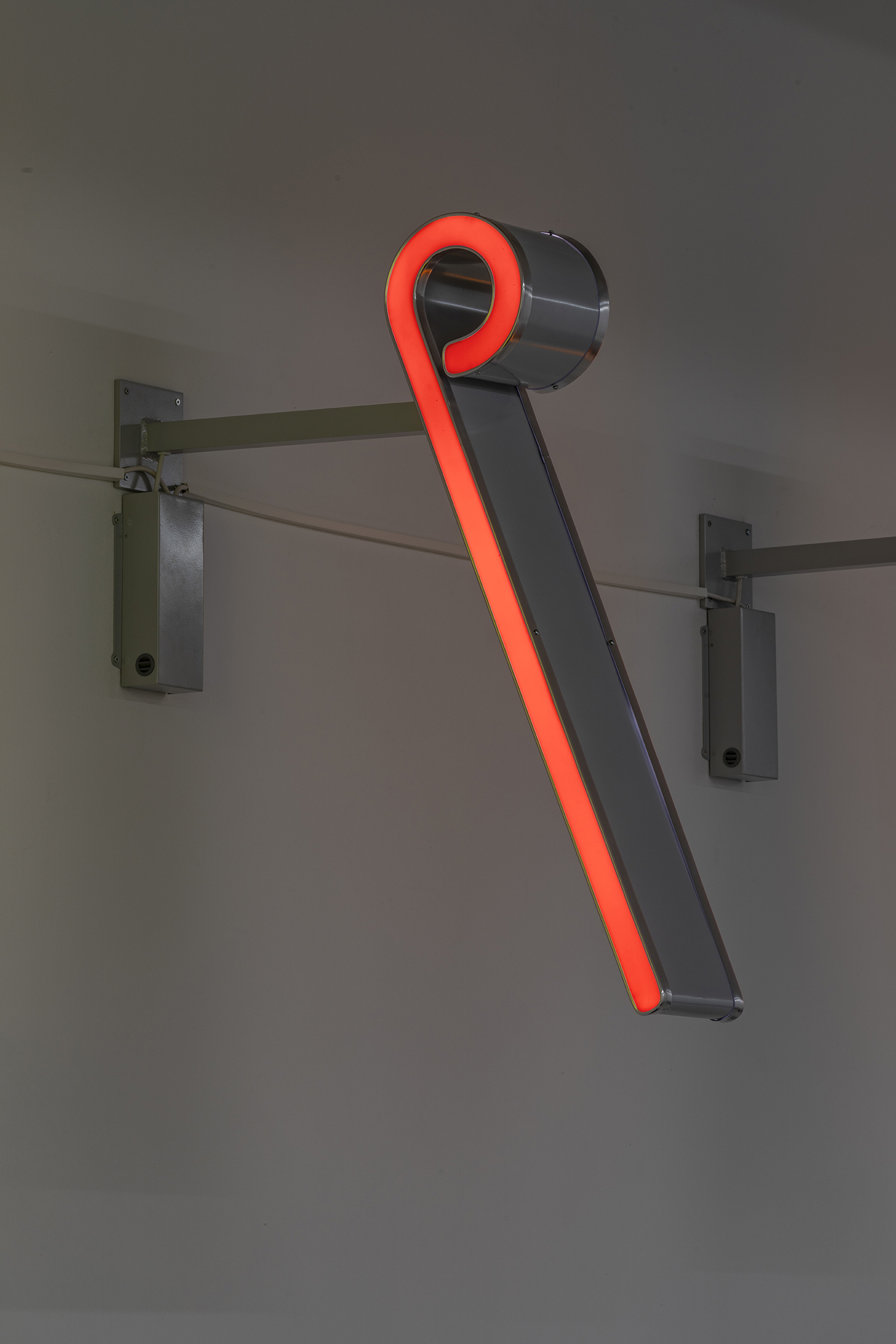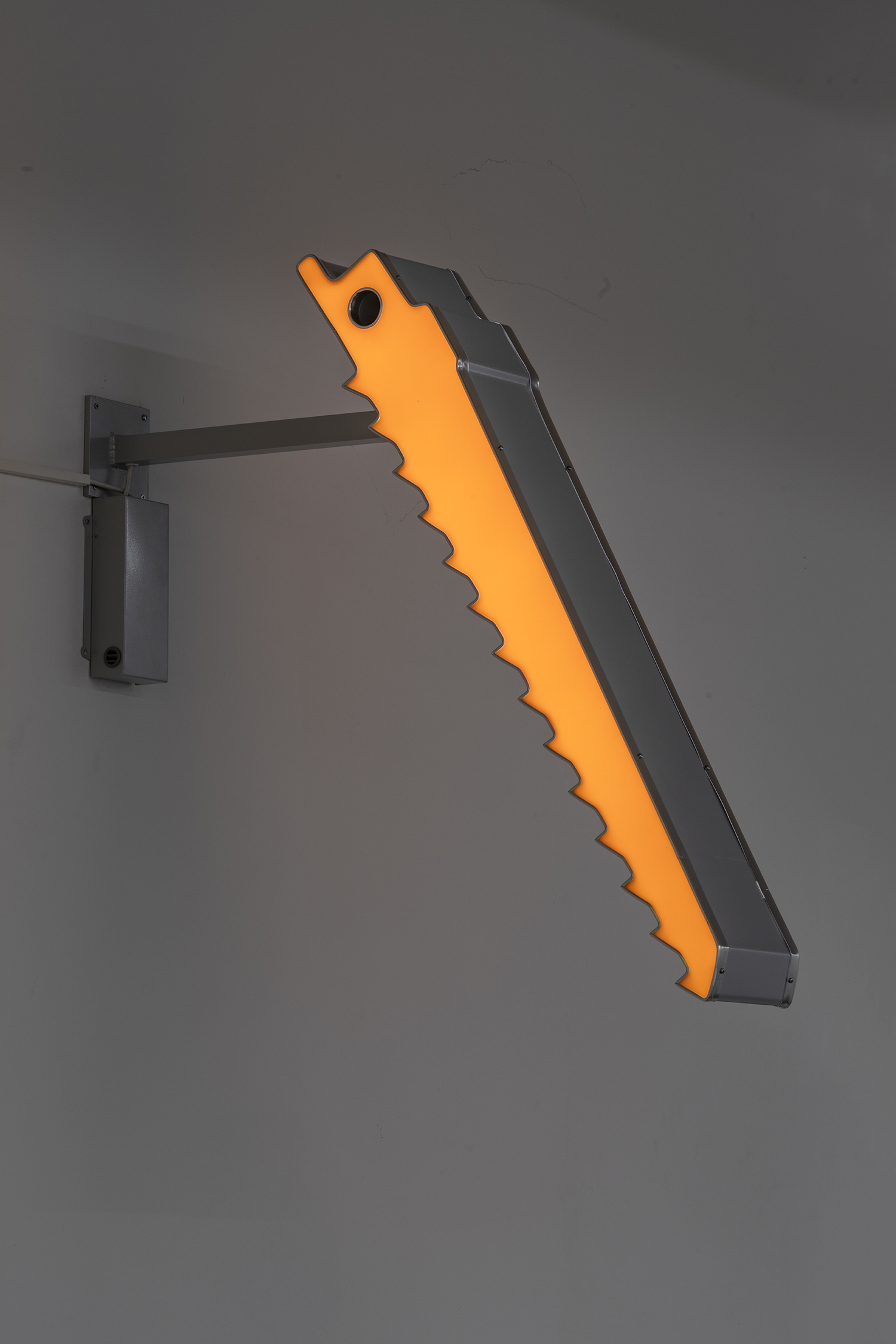Installation Views
Video
Works
Press Release
Service By marks the beginning of a two-part exhibition series that explores the supposed boundaries of the category of the artwork and their implications for exhibition making and experience.
To this end, the gallery space is deliberately splitted in two distinguished areas: While the front room shows only one work or a coherent series that gives each exhibition its title, the rear room addresses a form of perception other than visual.
A newly inserted door accentuates the separation between the two areas. In Service By, this door remains closed, offering no indication of what lies beyond. Inaccessibility is not presented here as an absence, but as a gesture of withdrawal that activates what is latent; what could be experienced is initially present only as a possibility.
Seraphin Reich
Major Key Alert
Time and again, Bruno Latour¹ uses keys as an illustrative example for his Actor-Network Theory to demonstrate how everyday objects mediate social actions and relationships. The French sociologist and philosopher argues that objects are not passive but actively participate in shaping human actions and social order; they are actors among actors. His central claim is that humans delegate responsibility to objects, which in turn shape behavior, thus blurring the line between humans and material entities: ‘It is because the social cannot be constructed with the social that it needs keys and locks.’²
A script is a program of actions which an artifact invites. In technical objectslike –keys– scripts are inscribed, as he illustrates with the example of the so-called Berlin Key: the key only works in such a way that it can be removed from the door lock once the door has been locked again from the other side. The script of the key dictates that the door should be closed behind oneself at night, but not during the day. This script is not just an instruction for properly closing the door but also mediates a disciplinary relationship between humans and objects. The key itself is an active part of this disciplining process–its mere existence creates the necessity for a certain course of action. However, to fully understand this functionality, the key’s mere existence or technical structure is not enough. It is only through language and explanation that the underlying action program dictated by the key becomes apparent. In short: Technology is society made durable.
Vijan’s keys, picks, and tension wrenches are an anti-script to the technical infrastructure of power that protects, stabilizes, and perpetuates existing unjust conditions. What script is inscribed in them? Take back what was taken from you–and what is protected by the technical security apparatus that, with arbitrary justifications, prevents reparations and justice. Do not request access, take it. Do not believe the official rules of the game; they were written against you from the start.
Martin Karcher
¹Latour describes in another text (Bruno Latour (1990): Technology is Society Made Du-rable. The Sociological Review, 38(1_suppl), 103–131) how hotel managers, frustrated by guests not returning their keys, found a solution by attaching large, heavy keychains. The keys were no longer just tools for locking doors but began to influence guests’ behavior by making it inconve-nient not to return them.
²Latour, Bruno (2000): The Berlin key or how to do words with things. In: P. M. Graves-Brown, ed. Matter, Materiality, and Modern Culture. London: Routledge, pp. 10-21.
